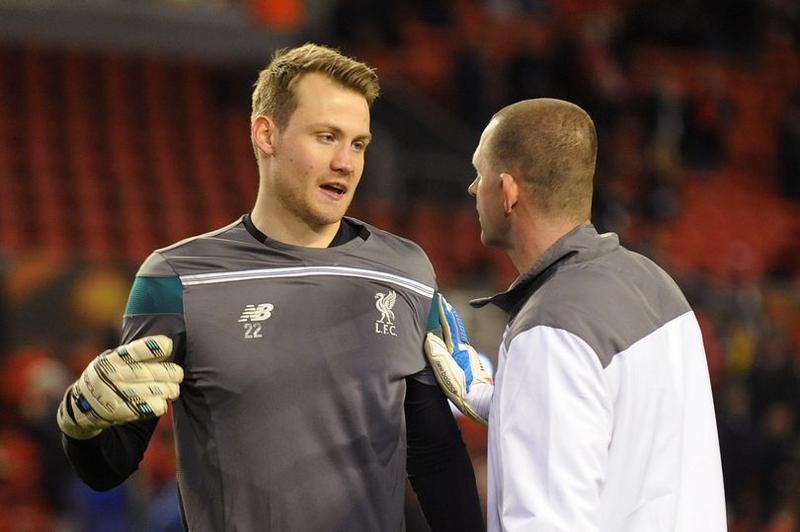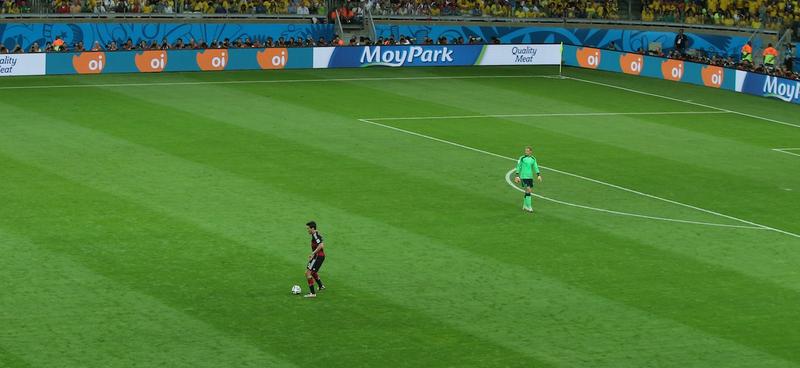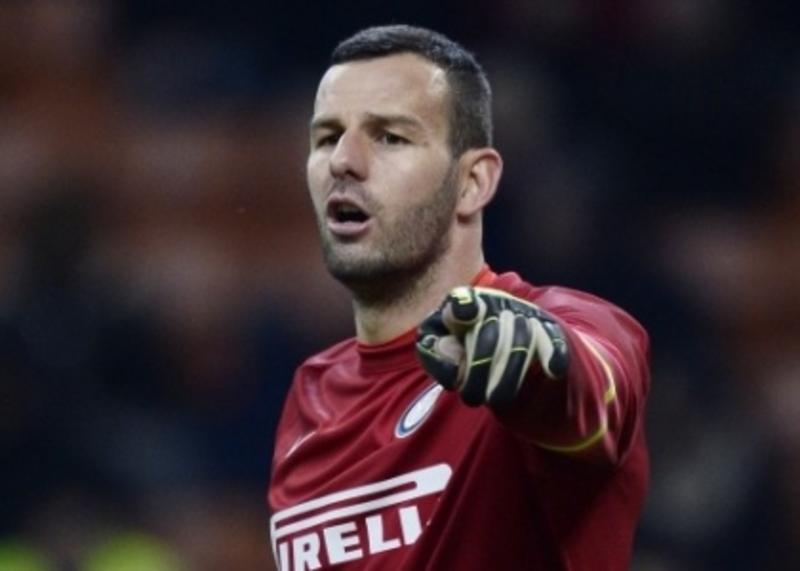Orders Placed by 1:00pm EST (M-F) Ship Same Day!!!

- 860-904-7679
- |
- |
- |
- help
- |
- about
Orders Placed by 1:00pm EST (M-F) Ship Same Day!!!

By Coach Bob Hummer of KeeperCoach.com
I’ve played for and coached with several coaches who frequently chanted “practice makes perfect.” I remember the light bulb turning on when I first heard a coach correct that with “perfect practice makes perfect play.” For many years, I’ve shared with the keepers I’ve trained another simple phrase: “You play the way you train…so train the way you must play.” The underlying premise is that any time a goalkeeper is on the practice pitch, he or she is training their brain. Because the human brain is capable of performing more than one trillion calculations in a single second, it makes for the world’s most powerful video recorder. Whether during a casual session with a few shooters just having fun, an intense pressure training session, or a full squad scrimmage, it makes no difference to the brain the intent of the shots as it acts like a sponge soaking up every detail of the goalkeeper’s actions and his or her surroundings.
Each time a soccer goalkeeper faces a shot, the brain records data for future use. When the goalkeeper reacts to a shot by launching to the upper 90…the brain is recording. When the goalkeeper hesitates because they aren’t sure the save can be made or if the shot is even on frame…the brain is recording. And when the goalkeeper chooses not to attempt the save because they don’t believe they can reach the ball or they assume it will miss the goal…the brain is recording. No big deal, right? Wrong!
One of the most important tools we must constantly develop is our reaction time to a shot. One of the most effective ways of developing this is through repetitious response to shooting situations. Repetition is not only for developing muscle memory…it’s also for training the brain. The idea is to reduce the time needed to determine if a save is necessary and what the appropriate response will be…and the time between making this decision and initiating the response.
Repetition is critical, but what are you repeating? Each time your eyes show your brain a ball being shot, it makes countless calculations to determine if it will launch the body into a dive or respond in some other fashion. When we shoot on our goalkeepers during training, we’re not simply teaching them how to respond or how to make the save…we’re teaching them how to make the decision of IF to respond.
One cause of confusion created by many goalkeepers comes when they don’t address shots seriously during training; as though they were playing in a match. We often see goalkeepers “cherry picking” the shots they respond to; often based upon their own perceived odds of success. The confusion comes in a match when the subconscious part of the brain which operates more instinctually based upon historical data is put in conflict with the conscious part of the brain that is making emotional decisions. The brain has been allowed in training to respond both casually and seriously, which leads to hesitation and second-guessing. The more we encourage hesitation and second-guessing through our casual attitude in training, the more confused the brain becomes…and the longer it takes to make the decision that leads to the response to the shot. This is not to say that we shouldn’t have fun during training!
Another problem is that many coaches and goalkeepers put too much emphasis during training on successfully making the save, and not enough on making the attempt. Before I anger a lot of coaches and confuse goalkeepers, let me explain…It doesn’t matter if you can save every shot you try for…IF you only try for those shots you know you can save. We must teach our keepers to fearlessly attempt every save…this mindset will ultimately put them in position far more often to make saves. Thus, increasing their save rate. We must give nearly equal importance to the effort put into the attempt as we do the outcome of the attempt.
Another unfortunate outcome is that goalkeepers often define their own limitations during training through the decisions they make. Fear of failure can often mentally paralyze young goalkeepers and prevent them from expanding their reach. I tell my keepers “If you tell yourself you can’t reach the ball…your brain will make you right. And if you tell yourself that you CAN reach the ball…your brain will move your body to make you right.” Your thinking will either unleash or limit the potential of your well-trained body. Many of the most spectacular saves made by goalkeepers weren’t made within their comfort zones…they were the result of creating a mindset that every shot might score and therefore was worthy of their best attempt. Playing goalkeeper requires us to throw our entire being into making every save…and letting the outcome be what it is.
One soccer goalkeeper I work with recently began choosing not to try for shots I knew she could save, but she had developed doubts about. In her mind, not trying to make a save and allowing a goal to be scored was not nearly as bad as trying to make the save and failing. She began to rationalize that although she had allowed a few goals to be scored in a match, she had actually played well because she stopped every shot she attempted to save. Over several sessions, I was able to change her perspective to the point that she now sees it as better to attempt and fail than to not attempt and fail. For the goalkeeper who fears failure, it’s simple math…attempting but failing to make the save vs. failing to attempt and thereby failing to make the save. As goalkeeper coaches, it’s our job to correct their math.
Perhaps the fastest way to demoralize a goalkeeper is to place them in a training environment where their odds of success are minimal at best…yet far too often, that is exactly what well-meaning coaches do. I recently went to one of my keeper’s travel club practices to watch him train. He had asked me for additional help in light a recent streak of avoidable goals. I had observed in my recent training sessions with him a hesitation in responding to shots he normally would easily save. I could almost see the wheels of decision slowly turning in his head. It didn’t take long for me to discover the root causes of his new-found challenge.
When his team’s training session began, each of the field players did their own form of unfocused stretching without any real warm-up. All of my keepers use a standard warm-up designed to get their heart pumping, muscles warmed up, and their brain over the natural reluctance to hit the ground. It also serves as a familiar starting point before a match that helps neutralize the effect of playing at an opponent’s field. Much to my disappointment, he wasn’t using it, and simply stretched his quads and back. Then he got into the goal without practicing catching. I later learned from him that he had stopped using the warm-up before matches and practices several weeks prior…right about the time he began hesitating on dives. His coach and teammates had ridiculed him for thinking he was “special” as he warmed up apart from them. That was an easy fix, but it wasn’t the only problem I discovered.
As his practice proceeded, his coach directed him to stand on his line while his teammates took shots on him from inside the “18”. A few things immediately stood out to me…the goal he was defending wasn’t the same size 8’x24’ he was accustomed to playing in. This meant the area he needed to cover was 3’ shorter on each side…and this reduced his need to make big extension dives. While the shooters were being properly taught to shoot for the corners, their near-misses which would have been legitimate goals using full-size goals were going undefended by him. His brain was being trained to only attempt to save shots that would score on an 18’ goal. Unfortunately, when I respectfully addressed this with his coach, I was told that it was more important that their shooters learn to score on a smaller goal as they worked on accuracy. Hmmm…perhaps this is why they had been scoring plenty of goals in recent matches, but were getting slaughtered by opponents?
Another flaw I discovered was the coach’s instructions to my keeper that he was to stay on his line; not stealing ground to cut the angle and make the goal a smaller target. His drill was making my keeper make penalty kick saves on shots coming from numerous points within the penalty area. Many of these shots should have been easily dealt with by my keeper making a breakaway save or at least coming out big. Instead, he had begun to cherry-pick the shots he attempted to save from the many shots that came in rapid order. His teammates were laughing at how easy it had become to score, and his shoulders had dropped in disgust. What was his brain being taught? Nothing that would benefit him in a match…or in his overall development. And it would take several training sessions and heart-to-heart chats with me to reframe this experience and rebuild his confidence.
Every coach loves a goalkeeper who brings passion to the game, but no coach likes a hot-head. I’ve seen far too much of this as a goalkeeper coach. Fists slamming the ground or punching a goal post make for great theatre, and may even serve to momentarily inspire teammates, but beyond the senseless risk of injury there’s a deeper problem. Anger makes for fuzzy math…I train my keepers to perform in a state of exhaustion to mirror match-like conditions. The intent of using strategies such as pressure training is to get the keeper accustomed to reading the developing play and responding appropriately while the heart is racing, the lungs are gasping, and the head is dizzy. This helps improve performance in less demanding situations. I do not train my keepers to perform in a state of extreme anger. That would be counterproductive because anger impacts the calculations the brain does in response to a shot. It also impacts how the body responds due to the involvement of uncontrolled emotion. The anger lingering well after an initial goal often leads to an additional goal because of fuzzy math, poor decisions, and flawed execution.
With all the goals I’ve allowed in more than two decades in the net, I can appreciate the anger a keeper feels when a defender “blows it” resulting in a goal…or when the keeper blows it resulting in a goal. My keepers are allowed to feel that anger for only two seconds…and then they must “flip the switch” and move on. They imagine a light switch on the wall and mentally turn it off with their finger. At first, that may sound silly, but my keepers say it helps. If you see me on the sidelines making a gesture with my finger, I assure you I’m motioning to my goalkeeper to “flip the switch”…
Coach Bob Hummer is the founder of Keeper Coach and the free international Keeper Coach Network where goalkeepers go to find goalkeeper coaches. Visit Keeper Coach at www.keepercoach.com and “Like” their Facebook page at www.facebook.com/goalkeepercoach.
Improve your skills



Improve your skills



Leave a comment